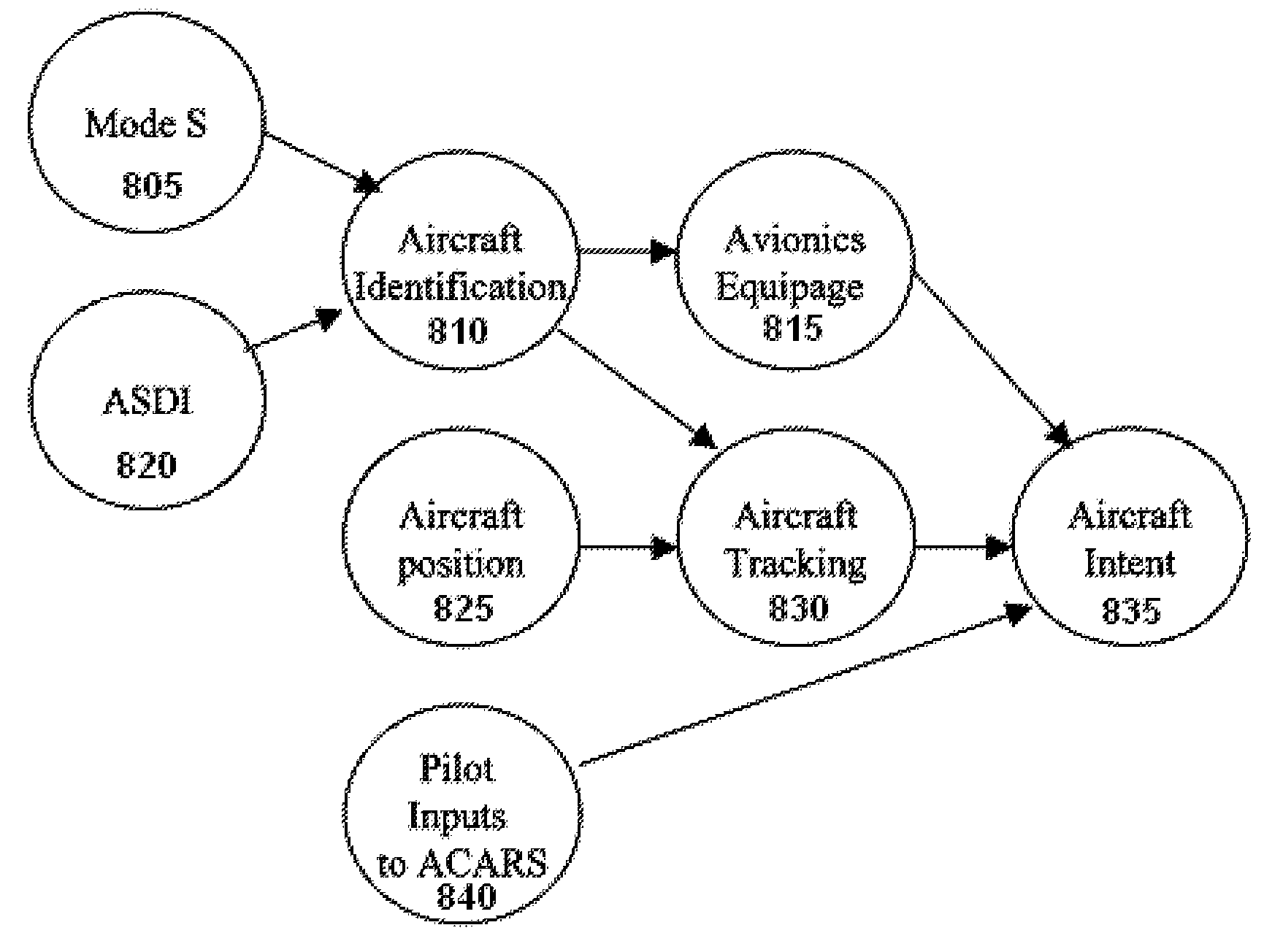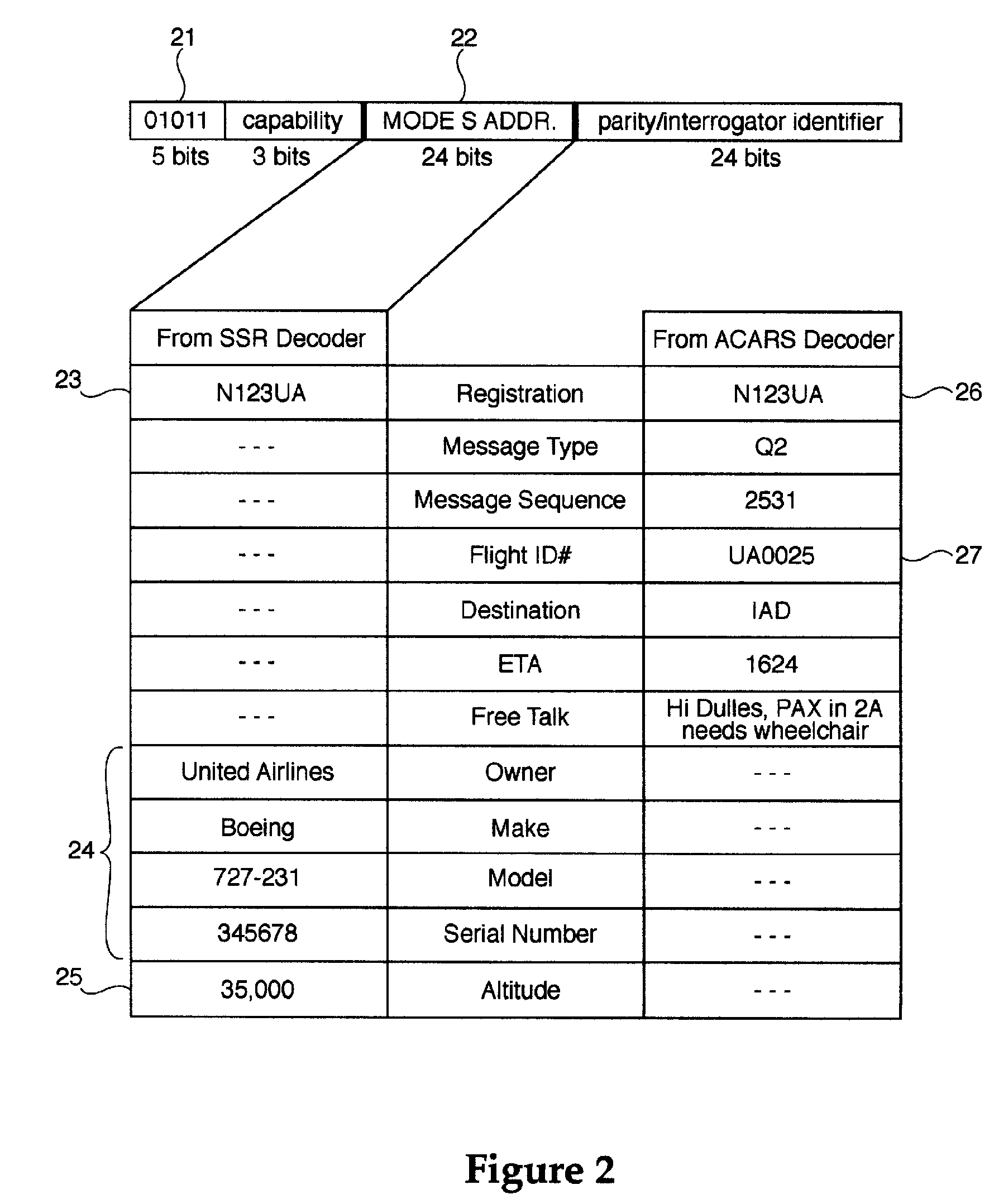Correlation of flight track data with other data sources
a flight track and data technology, applied in the field of aircraft tracking and identification, can solve the problems of not being able to accurately determine post-hoc, not being able to respond to specific noise complaints or noise incidents, and not being able to achieve accurate determination, low bandwidth, and effectively filtering out unnecessary and redundant replies
- Summary
- Abstract
- Description
- Claims
- Application Information
AI Technical Summary
Benefits of technology
Problems solved by technology
Method used
Image
Examples
first embodiment
[0065]In the present invention, ACARS data may be used to determine aircraft weight and identification. Using this information, along with flight track, aircraft thrust may be calculated accurately. From calculated aircraft thrust and flight track, the amount of noise that the aircraft produced may be accurately determined using any one of a number of noise calculation models.
[0066]Sample parts of an ACARS message used by the invention are illustrated in Table I below.
[0067]
TABLE IMESSAGEDESCRIPTIONC-GDSU AC0878Aircraft Registration C-CDSU, Flight numberYYZ ZRHAir Canada 878, going from Toronto to ZurichTTL PAX 149149 total passengers on boardOA 51, OB 54,51 in first class, 54 in business class,OC 44and 44 in steerageFOB 44.844,800 kilograms of fuel on boardZFW 108.3Zero fuel weight is 108,300 kilogramsTOW 152.6Actual take off weight is 152,600 kilograms
[0068]For a more complete listing of ACARS messages refer to Flyn, E., Understanding ACARS, Third Edition, Universal Radio Research...
second embodiment
[0078]In the present invention, for airport management applications, the surveillance element allows real time flight tracking and complete aircraft identification, which may be a feature which has not previously been available to airport management and other users. Since the flight track information may now be available to the airport in real-time, the airport may make use of noise data from the NMTS in real-time to provide a real-time correlated set of aircraft flight tracks and noise measurements.
[0079]Real-time noise tracking allows the airport to respond in real time to any inquiry such as a noise complaint telephoned into the airport. In addition, real-time noise tracking allows certain information to be presented in a real-time airport noise report, such as might be presented on the Internet at an airport website.
[0080]FIG. 6 is a flowchart illustrating the operating steps of the real-time noise tracking system of the second embodiment of the present invention. In step 610, r...
third embodiment
[0089]FIG. 7 is a flowchart illustrating the operating steps of the intelligent processing techniques for multiple multilateration receivers of the present invention.
[0090]In this third embodiment of the present invention, intelligent processing techniques are used at each of multiple multilateration receivers. Thus, the need to timestamp and send all messages within a time window or continuously over time has been overcome. The technique includes the use of logic or rules at each receiver, which may be applied to incoming replies and effectively filter out unnecessary and redundant replies.
[0091]These rules include such techniques as altitude filtering, Mode S, Mode A / C code filtering, and change filtering, where certain replies are accepted when they change state, which greatly decreases the number of replies to be time-stamped and sent to the central server while maintaining a sufficient number of time-stamped replies to match and provide high quality aircraft tracks.
[0092]The ru...
PUM
 Login to View More
Login to View More Abstract
Description
Claims
Application Information
 Login to View More
Login to View More - R&D
- Intellectual Property
- Life Sciences
- Materials
- Tech Scout
- Unparalleled Data Quality
- Higher Quality Content
- 60% Fewer Hallucinations
Browse by: Latest US Patents, China's latest patents, Technical Efficacy Thesaurus, Application Domain, Technology Topic, Popular Technical Reports.
© 2025 PatSnap. All rights reserved.Legal|Privacy policy|Modern Slavery Act Transparency Statement|Sitemap|About US| Contact US: help@patsnap.com



